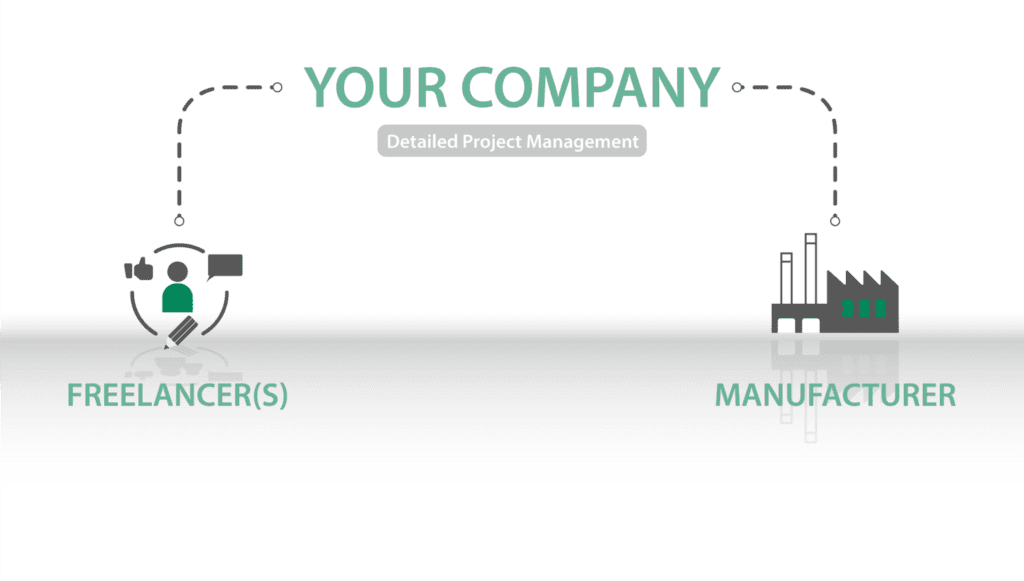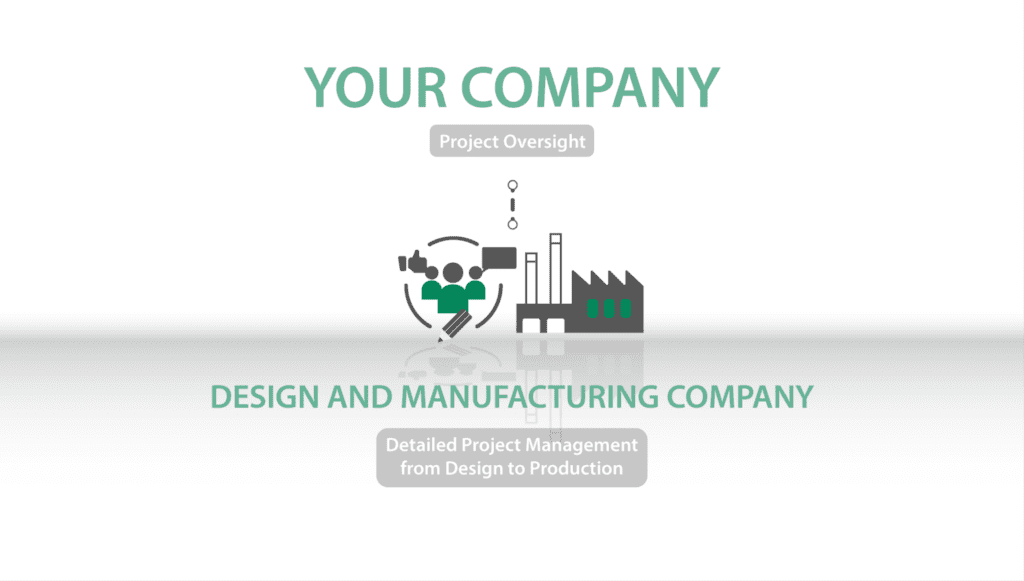Choose the right design partner for your new product development (NPD) and you’ll reap the rewards of their additional resource and expertise, increase the likelihood of on-time project delivery with high-quality results, and achieve careful cost-control for what is often a high expenditure (and therefore also high risk) undertaking. The team at Corintech discuss how to successfully outsource electronic product design…
There are many reasons for a company to consider outsourcing a design project or even their entire NPD process. Here are just three to consider:
- In-house resource limitations are preventing a project making it to market within the required time frame.
- Specific areas of technical expertise or manufacturing knowledge, required for a project, are not available in-house.
- Irregularity of project throughput makes outsourcing prove more cost-effective than employing a full-time team of designers and engineers and providing the tools and software that they need to undertake their roles effectively.
Design and engineering can be outsourced to individual freelancers, to consultancies, or to companies that specialise in both design and manufacturing services. Read on for advice on choosing the right partner for your next project and ensuring that the partnership excels.
Find the Right Partner for Your Project
To select the right design partner, it is vital that you clearly define why you need external services, what you need to achieve, and the timescales in which you need to complete your project. Not all design partners are alike. Consider the following areas to help you make the right decision.
Skill-Base
Electronic product development requires design input from a wide range of specialists. For example, hardware design may need expertise from the following list of specialisms:
- Electronics engineering (this is a wide field in and of itself)
- PCB (Printed Circuit Board) design
- Mechanical design
- Firmware development
- DFM (Design for Manufacture)
- Design for test
- Component sourcing
- Product lifecycle and obsolescence management
As technology moves forwards, many products also require some form of connectivity and design projects may also include:
- PC application development
- Smart phone application development
- Cloud-based application development
- Wireless and IoT (Internet of Things)
You will need to consider how you allocate each design element, whether to one organisation with specialisms in all the areas you require, or split across different specialist companies. Bear in mind that if work is spread across multiple providers, an extra layer of careful project management and communication will be required.
Experience
Always ask a prospective design partner about their experience. Have they worked on similar projects to yours in the past? Do any previous projects prove their expertise in an area that is important to the success of your project? Past projects are likely to be protected by some form of non-disclosure agreement (NDA), but a good potential design partner should be able to provide convincing evidence of applicable experience.
Human Resource
The added resource required to complete a project within your desired time frame should directly affect your decision over the type of partner you decide to work with. For small projects with a narrow focus, you may choose to employ a freelance designer or engineer. For more complex projects, requiring a range of specialisms, you would be more likely to consider a consultancy or a design and manufacturing company with a wide range of skilled staff.
Locality
Although it is possible to conduct business with anybody in the world, it is normally advantageous to be able to easily visit your design partner for face-to-face meetings and to get hands-on with physical design iterations and prototypes.
Supporting Capabilities
Consider whether there are any indirect capabilities that might add to the overall success of your project, or future projects as you build a business relationship. Design partners that also offer manufacturing services will have in-depth knowledge of production processes and typical production pitfalls. They will be able to offer DFM insight that will significantly improve the manufacturability and quality outcome of your product, as well as helping you to avoid the potential financial and timescale costs of fixing any issues discovered at the production stage.
Clearly Detail Your Project Requirements
When employing a third party to undertake design work, your project plans and outcome expectations need to be made as clear as possible. This is where a well-defined Product Design Specification (PDS) is important. There are many benefits in creating a clear and well-structured PDS:
- It will allow your chosen supplier to quote accurately, avoiding any surprise cost increases in later stages of a project.
- It will provide a clear guideline of expectations and can be used to measure whether they have been successfully met.
- It will help to limit unnecessary specification creep, which is a major culprit causing project delays.
Consider the following points when creating a PDS.
Take Issue Control Seriously
Even though we have already discussed the need to limit specification creep, it should be noted that it is often necessary to update specifications, this can be needed for any number of reasons:
- Two or more requirements are found to be conflicting (for example, cost vs. performance).
- New technology emerges while a project is in progress.
- Changing market factors require a specification change mid-project.
For this reason, a PDS should be considered a working document and carefully issue controlled. Updates should be detailed in a document change record. Each update should be fully agreed and signed by all stakeholders. Be aware that significant specification changes may require contracts to be re-negotiated including costs and timescales.
Discuss Your Project
Start your PDS with a brief description of the product and its main purpose. The market and global locales in which you intend to sell the product (this will dictate product approval requirements), its typical userbase and normal operational environment. This is also a good place to communicate requirements that are hard to quantify precisely, such as product aesthetics.
Get Specific
Working through the details of a PDS can be a daunting process for the uninitiated, this is where the input of an experienced design partner can really start to add value. As you work through the detail of your PDS, aim to be as logical and specific as possible. Quantify requirements wherever you can. It can help to tabulate specific requirements as shown in the example below:
A specification ID allows for easy reference of specification requirements in other documents including change records, and test and verification documentation.
Quantifiable success criteria enable clear understanding of exactly what is required.
Developing a clear assessment method for each requirement will enable agreed measurement of the success of a design against any criteria.
Allocating an importance value to each requirement can allow for straightforward reconciliation of conflicting requirements later in the project. A critical requirement will clearly always override a nice-to-have requirement.
Including a date or issue field with each requirement enables thorough tracking of changes throughout a project.
How Detailed is Too Detailed?
Most requirements included in your PDS should be critical or important to the success of your project. It is reasonable to include some nice-to-have requirements, but too many requirements in this category can detract from the overall success and prompt completion of a project.
What Requirements Should be Included?
This will vary from project to project; to help you get started, consider the following (non-exhaustive) list of categories:
- Functionality
- What are the main functions of the product?
- What is its purpose?
- Physical constraints
- Size
- Weight
- User interface
- What user controls are needed?
- What human readable information needs to be included?
- Ergonomics
- How will the user physically interact with the product (hold, carry, wear etc.)?
- Interoperability
- Mechanical relation to other products in a system or assembly
- Communication with other products or software systems
- Power source
- Permanent wired supply
- Batteries
- Charging requirements
- Service environment
- Temperature
- Humidity
- Dirt, dust, and other contaminants
- Shock and Vibration
- Typical treatment by normal userbase
- Safety requirements
- Hazards in assembly, use and disposal
- Potential for misuse and abuse
- Approvals
- What global territories will the product be marketed in?
- Will the device be used in an explosive atmosphere?
- Reliability and service life
- Shelf life
- Serviceability
- Customer, distributor, or manufacturer service?
- Spare parts needed
- Materials
- Aesthetics
- How/where sourced/produced
- Documentation required
- User manuals
- Quick start guides
- Certifications
- Safety information
- Packaging and transit
- Test requirements
- Production quantity projections
- Project time scales
An experienced design partner will prove an asset in reviewing your PDS and helping you to refine it.
Ensure the Project is Controlled
With potential design partners considered, and your PDS underway, there is one more critical element for successful design project outsourcing. You will need to decide how the project will be managed.
Day-to-Day Project Management
Project management requirements will vary depending on the complexity of the project and the type of design partner you engage.
If your project is simple and you are using a freelance designer or engineer, you are likely to manage the project in-house. Discuss design stages with your contractor and ask them to supply reasonable estimates for the timescales of each stage. This will help you to plan appropriately, and set your expectations for a workable completion date.
With more complex projects, and multiple design partners, management becomes more difficult, it is often best to keep control in-house in this case too, but this will require considerable time resource to keep all stakeholders in communication and on track. Another possibility here is to pass overall project management to one trusted subcontractor.
If you subcontract your entire project to a single organisation, it is often best to leave them with the responsibility for day-to-day project management. Even in this scenario, avoid being completely hands-off. Ensure that you are provided with regular updates and detailed progress reports. A good subcontractor should keep you up-to-date with progress and be open with respect to potential hurdles and delays. It is worth noting here, a design and manufacturing partner will be able to manage your project throughout the design process to full-scale production.
Project Reviews
You should work with your chosen subcontractor(s) to set specific important review stages or gates in the project timeline. Set these at points where design elements are complete and can be agreed upon to continue to the next stage of the project. These might include some or all of the following:
- Electronic schematic
- Costed bill of materials
- PCB layout
- Mechanical concepts
- Detailed mechanical design
- Electronic and mechanical prototypes
- Design for manufacture considerations
- Production and test documentation
- Production first-offs
- Full-scale production
Ensure that review stages are placed strategically, and particularly before any decision that will require significant expenditure.
In Conclusion
When considering outsourcing electronic product design and engineering, it can feel like a minefield. Successful electronic product design requires a wide range of expertise, and the range of subcontracting options are just as wide. We have only scratched the surface of this subject in the considerations above. In short:
- Carefully consider why you need to outsource.
- Find the right partner for your project and your business.
- Communicate clearly.
- Expect clear communication in return.
Corintech have designed and/or manufactured electronic products for a wide range of customers, in a wide range of sectors, since 1977.
For further advice and guidance why not contact our team to discuss your specific design requirements: +44 (0)1425 655655 or [email protected]





